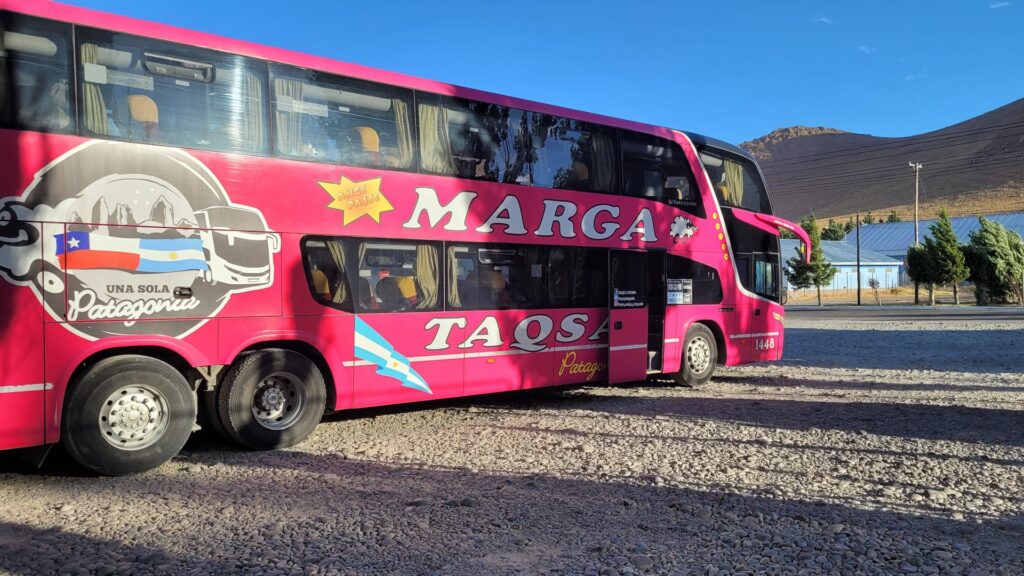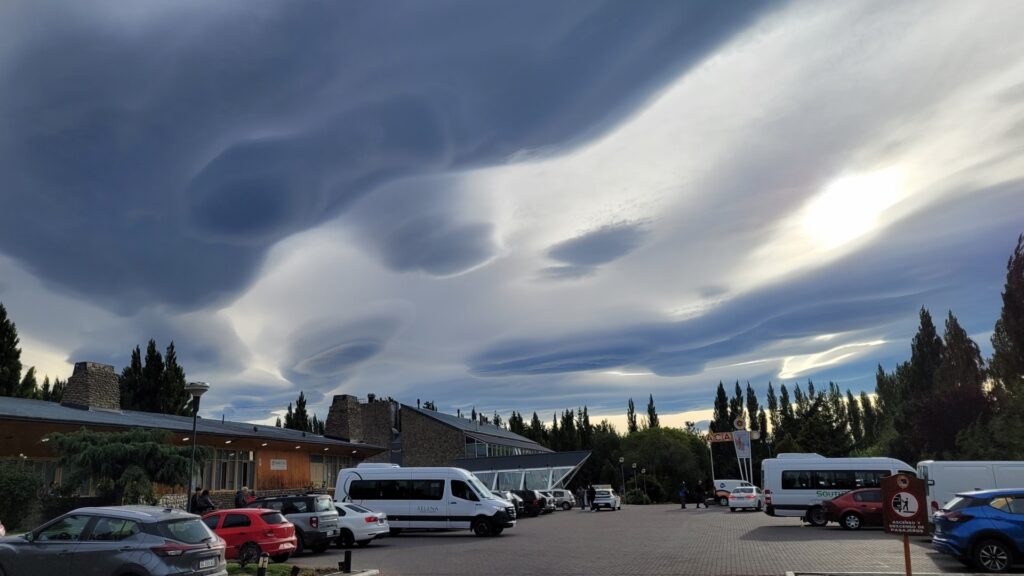Ditch the plane and hit the road with an epic 30-hour bus ride across the endless desert terrain of Patagonia, along the legendary Route 40.
I’m a big fan of bus travel. It’s usually comfortable – at least here in the southern hemisphere – affordable, easy-peasy, and requires minimal preparation. Plus, it takes you right from one center to another. The extra travel time you get, well, you can use it to finish that book or get some work done, all while enjoying the scenery passing by.
However, Patagonia isn’t known for its short bus rides and budget-friendly price tags, just like in any off-the-grid areas of the world. This little escapade cost me around $140 USD: you can cover the same distance by flying on the Chilean side for a similar amount or even less, from Puerto Montt to Punta Arenas. So, for once, the main reason to choose the bus isn’t about saving money.
But don’t be turned off by the prospect of spending day and night stuck in a metal and rubber container with noisy neighbors, no Wi-Fi, and no electrical outlets. Time can fly like the magical landscape outside your window.

A long-distance bus ride in Patagonia, such as between two major tourist destinations like Bariloche and Calafate, can cost nearly $140 USD for a one-way ticket.
With a bit of planning, however, that seemingly never-ending bus ride can turn into the highlight of your trip, revealing landscapes you’d miss from a plane. Just imagine spending a night in the middle of nowhere, surrounded by a desert plain and a hidden wildlife, all snug in the safety of your rolling cocoon. If you’re not in a rush, this journey is definitely worth the detour.
With one bus company and one departure daily, it’s a good idea to book ahead so you can choose your seat wisely.
Marga Taqsa is the only company offering the 1,428.3 km ride from Bariloche to Calafate via RN40. This service operates once daily during the summer season, running from November to March. Winter travelers should expect delays and road closures.
The extended duration includes a couple of 30-minute stops along the way and an expert maneuvering through unpaved or pothole-filled sections of the road, as the bus leaves civilization behind.
Fortunately, the company offers a double-decker bus that comes with one single-seat row, providing more space and comfort than the average long-distance bus. As this mode of travel is catered mostly to tourists and travelers, the atmosphere onboard is generally cheerful and relaxed.




What to expect along the way…
You’ll see many Guacanos—they like to hang along the roadside, apparently. The day can also be increasingly windy in the desert, resulting in stunning cloud formations and breathtaking sunsets stretching across the never-ending horizon line.


As you travel deeper south, the landscape transforms, transitioning from lush green trees to shrubs of varying shades of blue and green, scattered against a backdrop of brown and ochre dry ground cover.
Be sure not to doze off for the fantastical arrival to El Chalten, with the chiseled mountains rising majestically from the flat terrain like the floating castle of some fairytale.


My tips for the best bus experience:
I recommend traveling from north to south and then taking a flight back up from either Ushuaia or Puerto William, depending on whether you’re based in Buenos Aires or Santiago.
Book your seat well in advance, at least two weeks ahead, through the Plataforma 10 website, to secure the best spot: the front row of the main floor (Primer Piso). For optimal views, choose the driver’s side if you’re heading south to north, or the passenger side for the opposite direction.

Primer Piso refers to the main (upper) floor, while Planta Baja is the lower floor, next to the driver. Don’t bother with the lower floor – even though it’s often sold at a higher price with the promise of more room and reclinability, you’ll find the same level of comfort on the upper floor, with improved air circulation and better views. Also, the toilet is located downstairs, so you won’t be bothered with the smell. The Recorrido is the bus route showing the quaint frontier towns located along the main and only road, stretching the famous destinations of San Carlos de Bariloche and El Calafate.
Don’t count on every amenities working smoothly onboard; even the trusty reading light might let you down. Plan ahead by downloading books and entertainment onto fully charged devices, or bring a headlight if you prefer physical books.
The bus tends to slow down on bumpy sections of the RN40, which contributes to the long travel hours. Although the interior temperature was reasonable during my trip, it’s always wise to bring with you warm clothes or a blanket for the night.

Expect a modest morning meal of bottled water, white bread, and snacks to be served onboard. The pit stops typically occur at gas station convenience stores, which offer little more than the ubiquitous empanadas and coffee as fresh food, so bring your own fruits and vegs.


